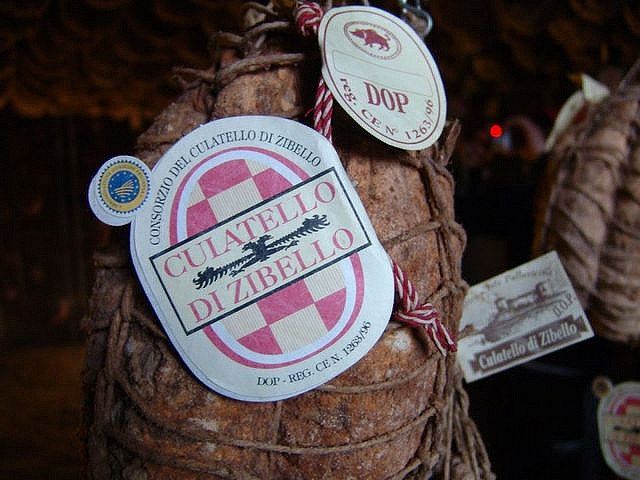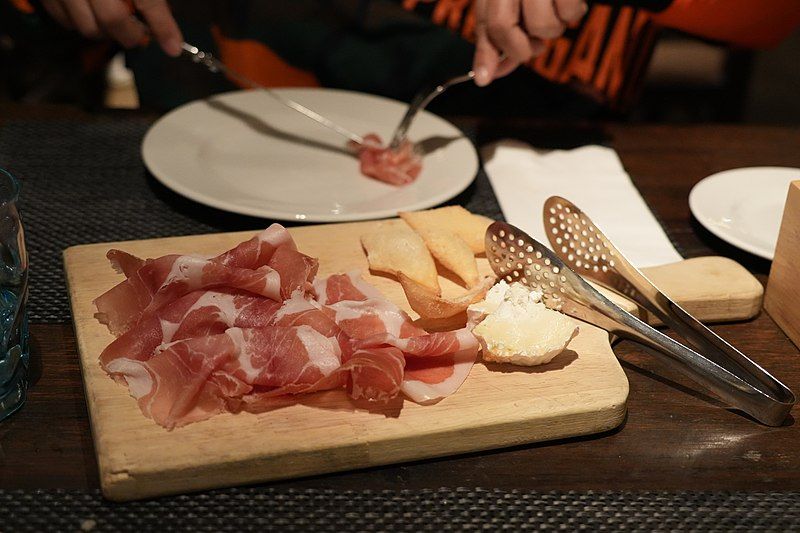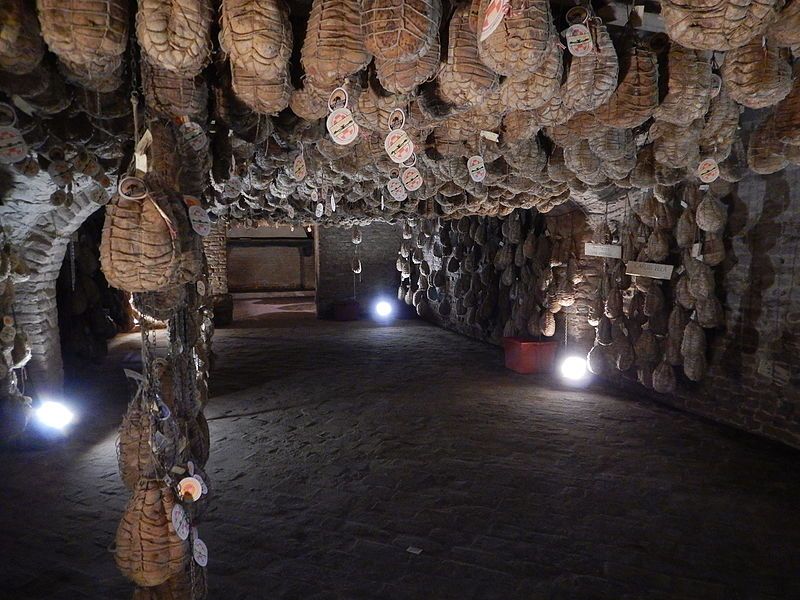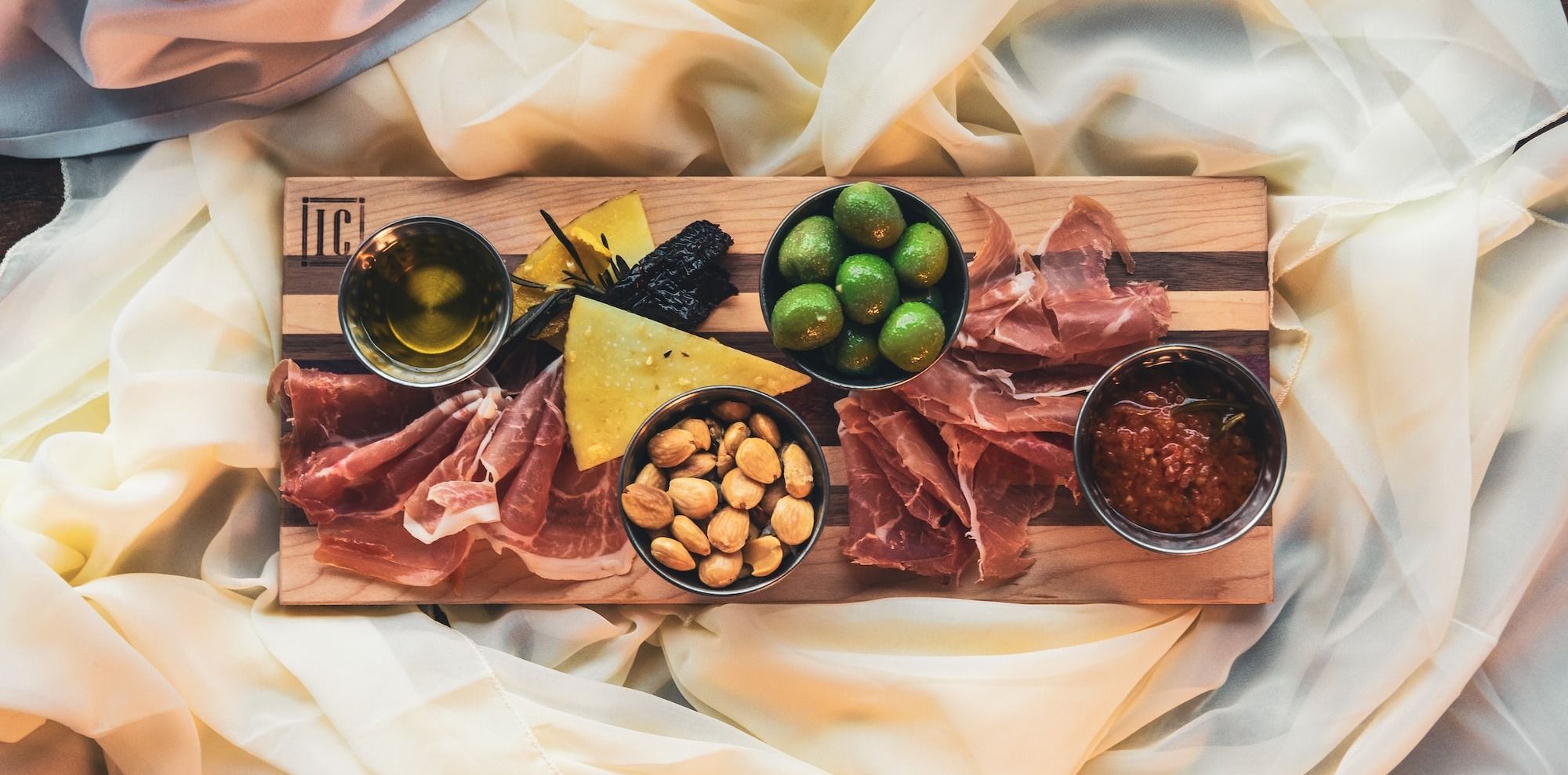Culatello di Zibello: Italy's Most Expensive Cured Ham
Culatello di Zibello, often hailed as the "King of Hams," comes with a price tag that mirrors its regal title. But what justifies this cost?

Deeply rooted in charcuterie traditions, Culatello di Zibello tells a story of centuries-old craftsmanship passed down through generations. Massimo Spigaroli, a master of this art, has elevated Culatello's status to that of a national gem.
Annually, Polesine sees an influx of food aficionados keen on experiencing this charcuterie marvel. Top chefs worldwide proudly integrate Massimo's Culatello into their dishes.
Such is its allure that even royalty hasn't remained immune to its exquisite flavor. Adding to its exclusivity, a single kilogram of this cured meat commands a price of $120.
What is Culatello di Zibello?

Culatello di Zibello, often referred to as the "King of Hams," is a prestigious cured meat hailing from Italy's Emilia Romagna region.
This boneless delicacy, with its characteristic pear shape and weighing around 6 1/2 pounds, is derived from a pig's meaty rear.
In contrast, Prosciutto, another famed Italian ham, retains the bone and is thinly sliced from the whole hind leg.
The distinct flavor of Culatello is accentuated by Parma's hot summers and humid winters, marking it as a Italian salami of unparalleled culinary heritage.

The Making of Culatello di Zibello
A Selective Choice of Pork
To craft the world's finest Culatello di Zibello, artisans employ stringent selection criteria. They typically prefer distinct pig breeds such as 'nero di Parma', commonly referred to as the Italian black pig, used for Parma dry-cured ham.
These chosen pigs must be a minimum of 9 months old and tip the scales at no less than 150 kilos. Protected Designation of Origin (PD0) also approved the following pig breeds as well: Large White, Duroc, or Landrace.
Raised exclusively in Emilia-Romagna and Lombardy, these pigs feast on a special diet enriched with whey from the legendary Parmigiano-Reggiano cheese.
Quite the gourmet meal! For Culatello, only the robust muscles of the pig's hind leg cuts are used, setting it apart from prosciutto that uses the entire back leg.
Nature's Role in Crafting a Delicacy
Located about 30 km from Parma, Zibello sits near the Po River in the province of Parma.
The town and its surrounding regions boast a distinct microclimate, characterized by cold, foggy winters and warm summers, which naturally ages Culatello di Zibello to perfection.
This isn't merely about storing meat in a cellar; it's nature's craft at work. A visit reveals the misty banks of the Po River, a scenic backdrop that contributes to Culatello's unparalleled flavor.
Notably, PDO Culatello di Zibello is handcrafted between October and February, with the cool fog ensuring optimal maturation and no need for refrigeration.

The Preparation and Aging of Italian "Salami"
From the upper and back sections of a pork's leg, Culatello is crafted exclusively from the rear thigh muscle.
This select meat is seasoned with a mix of salt, garlic, pepper, cinnamon, and Lambrusco wine before resting in a stainless steel basin.
It's then encased in a prepared pig bladder and tightly bound with twine in its signature pear shape, ensuring no air remains trapped.
The aging process of Culatello is both an art and science. It's placed in underground cellars with a consistent humidity level of 80%, creating an ideal environment.
These cellars, renowned for their walls that impart additional flavor, are instrumental in its maturation.
While Culatello di Zibello typically ages for a minimum of 18 months, select versions see maturation periods extending up to 42 months, enriching its unique taste and texture.
Time To Serve
Following its year-long aging, the culatello is on the brink of being table-ready, but not before some final preparations.
The meat is first cleansed and then drenched in Fontana del Taro, a distinct sparkling white wine hailing from Emilia-Romagna.
Post this wine immersion, any lingering skin and fat are delicately removed. The culatello is then hand-carved, ensuring each slice captures its exquisite flavor, ready for the plate.

What Does Culatello Taste Like?
One of the standout qualities upon your first bite of Culatello di Zibello, you're immediately captivated by its refined sweetness and grace.
Delving deeper into this exquisite delicacy, its true charm emerges from the harmonious union of the slightly "dry" lean meat and the richness of the fat.
This blend offers a palate experience that's beautifully balanced — a symphony of sweet, subtle, and robust flavors working in tandem.

Here's Why Culatello di Zibello is Expensive
The Exclusivity of Production Regions
Culatello di Zibello's price point is greatly influenced by its Protected Designation of Origin (PDO) status.
The PDO not only vouches for its authenticity but also confines its production to specific areas within the Parma province.
Such regions include Polesine Parmense, Busseto, Zibello, Soragna, Roccabianca, San Secondo, Sissa, and Colorno.
By ensuring production only in these areas, the PDO maintains the product's quality but inherently limits its quantity, creating a scarcity in the market.
The Artistry and Effort Involved
Creating the Culatello is nothing short of a labor of love. It involves precise selection of pigs, intricate aging processes, and the unmatched expertise of artisans who have dedicated years to perfecting this craft.
As the Culatello undergoes maturation, these artisans continue to invest their time and energy, monitoring conditions like light and airflow to guarantee its perfection. Such relentless dedication adds to the product's value.
The Time Investment
Delving deeper into the intricacies, crafting a 3-kg Culatello di Zibello demands an entire ham.
With an annual production capping at roughly 50,000 pieces, and considering every piece is handcrafted requiring meticulous care, the costs naturally rise.
Furthermore, the production constraints dictate that Culatello di Zibello can only be crafted during winter, and within a limited geographical span.
The PDO stipulations prevent the use of artificial refrigeration, and this mandates nearly two years of natural aging for each Culatello.
Some Interesting Facts about Culatello di Zibello
You might be curious about more than just the production and price. So, here are some interesting tidbits that might surprise you:
- The King's Delight: Culatello has been enjoyed by royalty. It's said that even Prince Charles orders it directly from Italy!
- A Celebrated Delicacy: There's an annual festival in Zibello dedicated solely to celebrating Culatello. Imagine an entire festival centered around this delectable meat!
- Not Just Any Wine: Culatello is often paired with specific wines, like Fortana del Taro, that complement its unique taste.

How to Elevate Culinary Experiences with Culatello
Culatello di Zibello is more than just a meat; it's a transformative ingredient that can elevate any culinary journey.
The Cheese Harmony
When you match the salty-sweet nuances of Culatello with cheese, magic happens. Especially when you opt for cheeses native to the Emilia-Romagna region, like the Parmigiano-Reggiano.
The creaminess of the cheese juxtaposed with Culatello's distinct flavor creates a symphony on the palate.
Crafting an Exquisite Antipasto
Planning a memorable dinner? Set the mood right with an antipasto platter. Envision thinly sliced Culatello, glistening alongside olives, artichokes, and a hint of aged balsamic vinegar.
It's not just a starter; it's a promise of a gastronomic adventure.
The True Essence of Culatello
For many connoisseurs, Culatello di Zibello is best savored in its untouched glory. While pairings like Micca bread from Parma or cheeses such as Parmigiano Reggiano are enticing, they may slightly tweak its genuine taste.
True enthusiasts often prefer it solo, letting its robust flavor and rich heritage shine without distraction.
In Conclusion
Culatello di Zibello is more than just cured meat—it's a testament to Italian dedication and culinary mastery. From selecting the finest pigs to the meticulous aging process, every detail justifies its premium cost.
When you savor its distinct flavor, you're tasting Italy's rich culinary legacy. Each bite celebrates a journey of craftsmanship and tradition.


